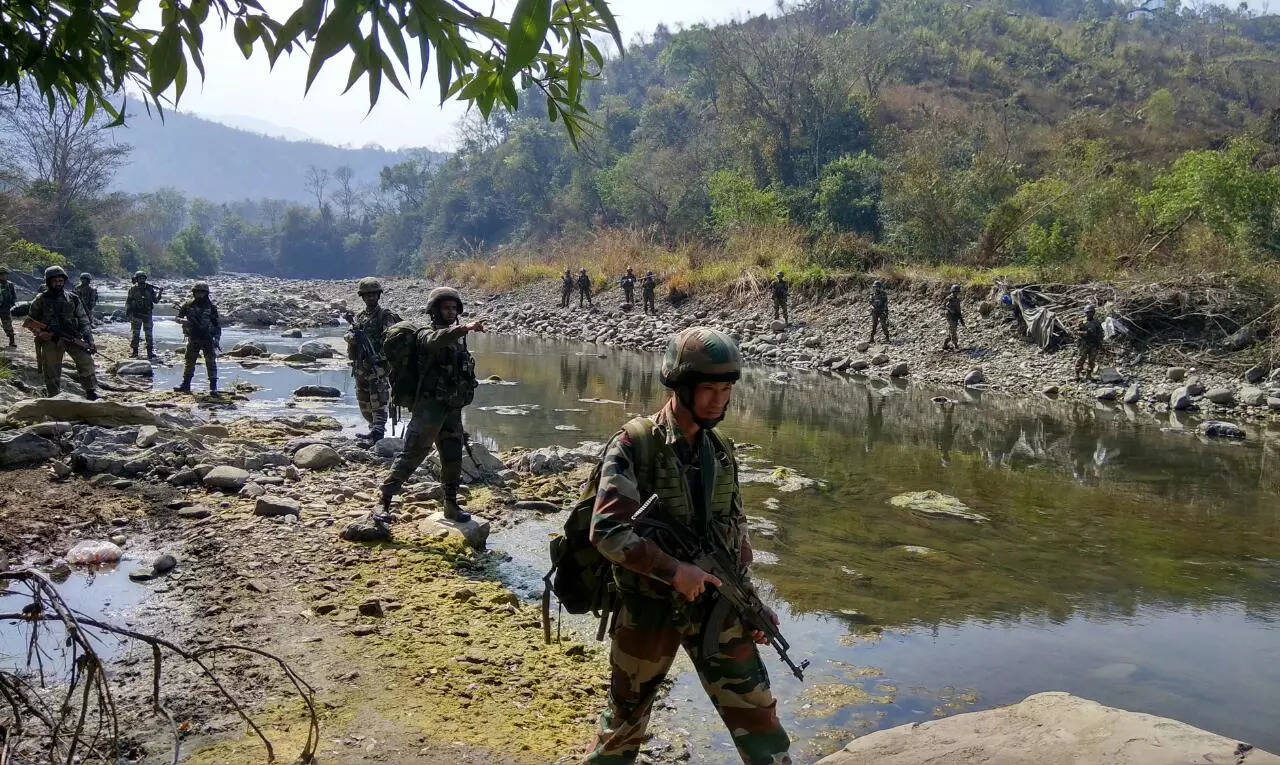The Nagaland government will hold consultations with tribal bodies and civil society organisations of the state on the issue. Separately, the influential Naga Students’ Federation has shot off a letter to the United Nations Secretary-General António Guterres seeking his intervention in the matter.
Four northeastern states — Mizoram, Manipur, Nagaland and Arunachal Pradesh — share a total of 1,643-km border with Myanmar, a large portion of which is still unfenced.
On Thursday, Union home minister Amit Shah announced that the government decided to scrap the India-Myanmar Free Movement Regime (FMR) to safeguard the country’s internal security and demographic structure of the northeastern states. Earlier, the home ministry had said the entire stretch of the Myanmar frontier would be fenced in the same way India erected barbed-wire fences along its border with Bangladesh.
FMR basically allows people residing close to the border to venture 16 km into each other’s territory without visa. The current version of FMR (Bilateral Land Border Crossing Agreement) was introduced in 2018 as part of the Narendra Modi government’s ‘Act East’ policy, aimed at promoting economic cooperation, cultural ties and developing strategic relationships with countries in the Indo-Pacific region.
However, the genesis of FMR can be traced back to the Indo-Burma (now Myanmar) Friendship Treaty of 1951 which acknowledged “the many ties that have bound the two countries for centuries”.
Realising that India’s new passport rules of 1950 came as a hurdle in the free movement of border communities, the central government decided to relax rules for hill tribes.
“As a result of the revision of Indian Passport rules, the free movement between India and Burma [now Myanmar] of members of Indian and Burmese hill tribes living in the territories adjacent to the Indo-Burmese land frontier who habitually travel between these countries, was hampered.
“In order to remove this difficulty and since members of Indian hill tribes entering Burma by land who do not proceed beyond 25 miles from the land border are exempt from the provisions of the Burma Passport Rules, similar exemption has been granted to members of hill tribes entering India by land,” the home ministry said in its annual report of 1950-51.
The whole idea was to facilitate free travel of communities such as Nagas and Chin-Kuki-Zo people who inhabit the hilly border areas of the two countries.
Who’s backing the move
The Centre’s decision to fence the Indo-Myanmar border comes in the wake of ethnic turmoil in Manipur, which has claimed more than 180 lives so far. The state government and civil society groups in the Imphal Valley have claimed that FMR allowed infiltration of Myanmar-based militants, illegal migrants as well as drug trafficking.
Hailing the Centre’s move, Manipur chief minister N Biren Singh said on X, “Immensely grateful to Hon’ble PM Shri Narendra Modi Ji and Hon’ble HM Shri Amit Shah Ji for their commitment to securing our borders. The decision to scrap the FMR between India and Myanmar, as recommended by the Minister of Home Affairs, India, is crucial for our internal security and the demographic integrity of our North Eastern States.”
Shah said in Parliament on August 9 last year that problems started in Manipur with the influx of Kuki refugees from neighbouring Myanmar after the military rulers in the neighbouring country started a crackdown against militants in 2021.
The Kuki refugees started settling down in the jungles in Imphal Valley, raising fears of a demographic change in the region, Shah had said, adding that the unrest began when rumours started circulating that the refugee settlements had been declared as villages.
Shah’s remarks had sparked protests by Kuki bodies that demanded clarification of the statement.
Besides Singh,Arunachal Pradesh CM Pema Khandu has welcomed the move to scrap FMR.
The porous border gives easy access to NE insurgent groups staying in Myanmar to carry out unsocial activities in the three eastern districts of Arunachal – Tirap, Changlang and Longding.
…And who’s opposing
Tribal groups in Nagaland, Manipur and Mizoram are fiercely opposed to the decision to seal the border saying this would have wider ramifications for traditional way of life and ethnic ties between communities across the border.
In Nagaland, various civil societies, tribal organisations, Naga political groups and also Chief Angh (king) of Longwa Village in Mon district, whose house would get divided into two nations, have objected to the move.
The National Socialist Council of Nagalim (Isak-Muivah) or NSCN-IM which is negotiating with the Centre on the Naga political issue, has also stated that the decision cannot be accepted.
Besides, the Naga Students’ Federation has appealed to the UN chief to ask the Government of India to “immediately stop the programme for abolishing Free Movement Regime and the proposed fencing on the arbitrary India-Myanmar boundary in Naga homeland”.
In Mizoram, the lone Rajya Sabha member from the state, K Vanlalvena, wrote to home minister Shah objecting to the planned withdrawal of FMR.
“Due to the unjust actions of the British, our people were settled in three countries — India, East Pakistan and Burma. Most unfortunately, at the time of gaining independence from the British, this wrongly demarcated border was never corrected but simply forced upon us…which remains till this day as a great injustice to our people,” Vanlalvena said in his letter.
“While we have been yearning for the day that this error would be corrected so that our people would be reunited under one administrative umbrella, the recent decision to fence the Mizoram-Myanmar border has come as the most shocking news,” the MP added.
Last month, people in southern Mizoram’s Lawngtlai and Siaha districts, close to the Myanmar border, told the Rajya Sabha MP that they would never allow any such move as it would affect their livelihood.
Farmers have been cultivating paddy and winter crops on the banks of two border rivers – Tiau and Chhimtuipui – for centuries, and the proposed fencing of the India-Myanmar frontier would leave them at the receiving end.
(With inputs from HC Vanlalruata and agencies)
